|
Books Should Be Free Loyal Books Free Public Domain Audiobooks & eBook Downloads |
|
|
Books Should Be Free Loyal Books Free Public Domain Audiobooks & eBook Downloads |
|
Top Authors |
|---|
|
Book type:
Sort by:
|
By: Arthur Machen (1863-1947) | |
|---|---|
 Hill of Dreams
Hill of Dreams
The novel recounts the life of a young man, Lucian Taylor, focusing on his dreamy childhood in rural Wales, in a town based on Caerleon. The Hill of Dreams of the title is an old Roman fort where Lucian has strange sensual visions, including ones of the town in the time of Roman Britain. Later it describes Lucian's attempts to make a living as an author in London, enduring poverty and suffering in the pursuit of art. Generally thought to be Machen's greatest work, it was little noticed on its publication in 1907 save in a glowing review by Alfred Douglas... | |
By: Hopkins, Gerard Manley (1844-1889) | |
|---|---|
 Poems of Gerard Manley Hopkins, ed. Robert Bridges
Poems of Gerard Manley Hopkins, ed. Robert Bridges
Gerard Manley Hopkins (1844–89) was an English poet, educated at Oxford. Entering the Roman Catholic Church in 1866 and the Jesuit novitiate in 1868, he was ordained in 1877. Upon becoming a Jesuit he burned much of his early verse and abandoned the writing of poetry. However, the sinking in 1875 of a German ship carrying five Franciscan nuns, exiles from Germany, inspired him to write one of his most impressive poems “The Wreck of the Deutschland.” Thereafter he produced his best poetry, including “God’s Grandeur,” “The Windhover,” “The Leaden Echo,” and “The Golden Echo.” | |
By: Constance Johnson | |
|---|---|
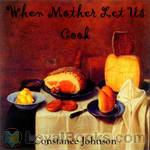 When Mother Lets Us Cook
When Mother Lets Us Cook
A book of simple receipts for little folk with important cooking rules in rhyme together with handy lists of the materials and utensils needed for the preparation of each dish. | |
By: Varous | |
|---|---|
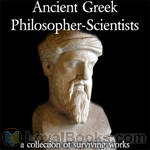 Ancient Greek Philosopher-Scientists
Ancient Greek Philosopher-Scientists
The Pre-Socratic Greek philosophers, that is, the philosopher-scientists who lived before or contemporaneously to Socrates, were the first men in the Western world to establish a line of inquiry regarding the natural phenomena that rejected the traditional religious explanations and searched for rational explanations. Even though they do not form a school of thought, they can be considered the fathers of philosophy and many other sciences as we have them now. None of their works is extant, so, in this collection, we present the textual fragments, when existing, of ten Pre-Socratic philosopher-scientists, and quotations and testimonials about them left by later authors... | |
By: Ernest William Hornung | |
|---|---|
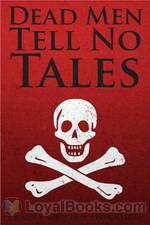 Dead Men Tell No Tales
Dead Men Tell No Tales
Ernest William Hornung (June 7, 1866 – March 22, 1921) was an English author. Hornung was the third son of John Peter Hornung, a Hungarian, and was born in Middlesbrough. He was educated at Uppingham during some of the later years of its great headmaster, Edward Thring. He spent most of his life in England and France, but in 1884 left for Australia and stayed for two years where he working as a tutor at Mossgiel station. Although his Australian experience had been so short, it coloured most of his literary work from A Bride from the Bush published in 1899, to Old Offenders and a few Old Scores, which appeared after his death... | |
By: Rufus Estes (b. 1857) | |
|---|---|
 Good Things to Eat as Suggested by Rufus
Good Things to Eat as Suggested by Rufus
Rufus Estes was born a slave in 1857 in Tennessee, and experienced first hand the turmoil of the Civil War. He began working in a Nashville restaurant at the age of 16, and in 1883 took up employment as a Pullman cook. In 1897, he was hired as principal chef for the private railway car of U.S. Steel magnates (the fin-de-siecle equivalent of today’s Lear Jets for corporate travel). There he served succulent fare for the rich and famous at the turn of the 20th century. | |
By: Richard Jefferies (1848-1887) | |
|---|---|
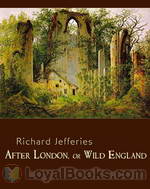 After London, or Wild England
After London, or Wild England
First published in 1885, After London, or Wild England is considered to be one of the earliest instances of post-apocalyptic fiction, describing the effects of an unspecified catastrophe that dramatically changes the face of England and its population. Divided into two parts, the first depicts the fall of civilization, as society reverts to its more primitive roots, while the second part is set years after the apocalyptic event and examines the evident changes in both natural scenery and social structure... | |
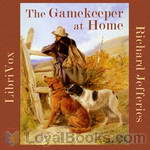 The Gamekeeper at Home
The Gamekeeper at Home
Richard Jefferies (1848 – 1887) was born and spent his childhood on a farm at Coate,Wiltshire. He joined the ‘Wiltshire and Gloucestershire Standard’ in 1868 and also started to write articles and pamphlets on various agricultural issues and local history topics. He is best known for his depiction of English rural life in essays, books of natural history, and novels. This classic of English nature writing gives an idea of the life of a gamekeeper in southern England in the second half of the nineteenth century. | |
By: Ann Radcliffe (1764-1823) | |
|---|---|
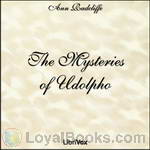 The Mysteries of Udolpho
The Mysteries of Udolpho
Considered a change agent in early Gothic romance; oft-referenced in later literary works or paid homage to by such authors as Jane Austen (influential novel ready by her heroine, Catherine Morland, in Northanger Abbey); Edgar Allen Poe (borrowed plot elements for the short story The Oval Portrait); and Sir Walter Scott. In The Mysteries of Udolpho, one of the most famous and popular gothic novels of the eighteenth century, Ann Radcliffe took a new tack from her predecessors and portrayed her heroine’s inner life, creating an atmosphere thick with fear, and providing a gripping plot that continues to thrill readers today... | |
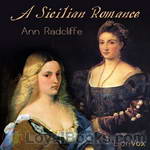 A Sicilian Romance
A Sicilian Romance
A Sicilian Romance is a Gothic novel by Ann Radcliffe. It was her second published work, and was first published anonymously in 1790. The plot concerns the turbulent history of the fallen aristocrats of the house of Mazzini, on the northern shore of Sicily, as related by a tourist who becomes intrigued by the stories of a monk he meets in the ruins of their doomed castle. The introduction to the 'Worlds Classics' edition notes that in this novel "Ann Radcliffe began to forge the unique mixture of the psychology of terror and poetic description that would make her the great exemplar of the Gothic novel, and the idol of the Romantics"... | |
By: Sophocles (c. 497 BC - c. 406 BC) | |
|---|---|
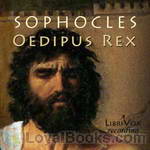 Oedipus Rex
Oedipus Rex
Oedipus the King (often known by the Latin title Oedipus Rex) is an Athenian tragedy by Sophocles that was first performed c. 429 BC. It was the second of Sophocles's three Theban plays to be produced, but it comes first in the internal chronology, followed by Oedipus at Colonus and then Antigone. Over the centuries, it has come to be regarded by many as the Greek tragedy par excellence. | |
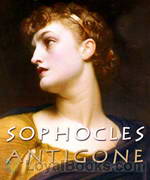 Antigone
Antigone
This is the final installment in Sophocles's Theban Plays, following Oedipus Rex and Oedipus at Colonus. Oedipus's daughter Antigone deliberately breaks the laws of Thebes when she buries her brother's body and is sentenced to death. She clashes with Creon, the King of Thebes, over what constitutes justice and morality: the laws of the state or the laws of the individual. | |
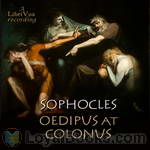 Oedipus at Colonus
Oedipus at Colonus
This is the second installment in Sophocles's Theban Plays that chronicles the tragic fates of Oedipus and his family. After fulfilling the prophecy that predicted he would kill his father and marry his mother, Oedipus blinds himself and leaves Thebes, to wander in the wilderness accompanied by his daughters Antigone and Ismene. | |
 Electra
Electra
Sophocles' play dramatizes the aftermath of Agamemnon's murder by his wife Clytemnestra and her lover Aegisthus. His daughter Electra is hungry for revenge and longs for the return of her brother Orestes to help her achieve her ends. | |
By: George B. Grinnell | |
|---|---|
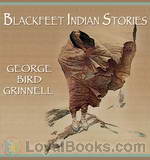 Blackfeet Indian Stories
Blackfeet Indian Stories
The Blackfeet were hunters, travelling from place to place on foot. They used implements of stone, wood, or bone, wore clothing made of skins, and lived in tents covered by hides. Dogs, their only tame animals, were used as beasts of burden to carry small packs and drag light loads. The stories here told come down to us from very ancient times. Grandfathers have told them to their grandchildren, and these again to their grandchildren, and so from mouth to mouth, through many generations, they have reached our time. (Sibella Denton) | |
By: Anne Brontë (1820-1849) | |
|---|---|
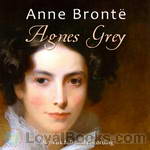 Agnes Grey
Agnes Grey
Agnes Grey is the daughter of a minister, whose family comes to financial ruin. Desperate to earn money to care for herself, she takes one of the few jobs allowed to respectable women in the early Victorian era, as a governess to the children of the wealthy. In working with two different families, the Bloomfields and the Murrays, she comes to learn about the troubles that face a young woman who must try to rein in unruly, spoiled children for a living, and about the ability of wealth and status to destroy social values. After her father's death, Agnes opens a small school with her mother and finds happiness with a man who loves her for herself. | |
By: Giacomo Casanova (1725-1798) | |
|---|---|
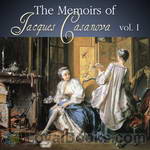 The Memoirs of Jacques Casanova
The Memoirs of Jacques Casanova
This is the first of five volumes. – Giacomo Casanova (1725 in Venice – 1798 in Dux, Bohemia, now Duchcov, Czech Republic) was a famous Venetian adventurer, writer, and womanizer. He used charm, guile, threats, intimidation, and aggression, when necessary, to conquer women, sometimes leaving behind children or debt. In his autobiography Histoire de ma vie (Story of My Life), regarded as one of the most authentic sources of the customs and norms of European social life during the 18th century, he mentions 122 women with whom he had sex... | |
By: Robert Bloch | |
|---|---|
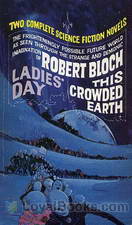 This Crowded Earth
This Crowded Earth
Robert Bloch was a prolific writer in many genres. As a young man he was encouraged by his mentor H. P. Lovecraft, and was a close friend of Stanley G. Weinbaum. Besides hundreds of short stories and novels he wrote a number of television and film scripts including several for the original Star Trek. In 1959 Bloch wrote the novel Psycho which Alfred Hitchcock adapted to film a year later. He received the Hugo Award, the World Fantasy Award, the Bram Stoker Award, and he is a past president of the Mystery Writers of America. Published in Amazing Stories in 1958, This Crowded Earth is a thriller set on an overpopulated Earth of the future. | |
By: Mark Phillips (Randall Garrett and Laurence M. Janifer) | |
|---|---|
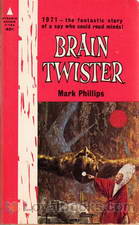 Brain Twister
Brain Twister
“Mark Phillips” is, or are, two writers: Randall Garrett and Laurence M. Janifer. Their joint pen-name, derived from their middle names (Philip and Mark), was coined soon after their original meeting, at a science-fiction convention. Both men were drunk at the time, which explains a good deal, and only one has ever sobered up. A matter for constant contention between the collaborators is which one. Originally published as That Sweet Little Old Lady, Brain Twister follows the adventures of FBI agent Kenneth J... | |
By: Elliott O’Donnell (1872—1965) | |
|---|---|
 Animal Ghosts
Animal Ghosts
Summary: This is a collection of ghost stories in which the antagonists are various animals. Divided up into chapters of ghost sightings by each group of animals, you will hear of hauntings by dogs, cats, birds, jungle animals, etc. (Summary by Allyson Hester) | |
By: Robert Barr (1850-1912) | |
|---|---|
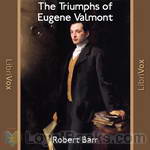 The Triumphs of Eugene Valmont
The Triumphs of Eugene Valmont
Short stories by a colleague of Jerome K. Jerome, and friend of Sir Arthur Conan Doyle. Barr probably wrote the first parody of Sherlock Holmes (included in this collection). He co-edited “The Idler” with Jerome. [written by Czechchris] | |
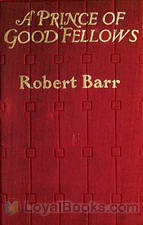 A Prince of Good Fellows
A Prince of Good Fellows
Robert Barr (1849 - 1912) was a Scottish Journalist, editor, humorist and author. A Prince of Good Fellows was published in 1902, and is a series of Historical Fiction stories about the young James V, King of Scots (1512 – 1542). The chapters are full of humor and adventure and portrays a young King who is both wise and adventurous. | |
 In a Steamer Chair and Other Stories
In a Steamer Chair and Other Stories
Thirteen short stories by one of the most famous writers in his day. Robert Barr was a British Canadian short story writer and novelist, born in Glasgow, Scotland. In London of the 1890s Barr became a more prolific author - publishing a book a year - and was familiar with many of the best selling authors of his day, including Bret Harte and Stephen Crane. Most of his literary output was of the crime genre, then quite in vogue. When Arthur Conan Doyle's Sherlock Holmes stories were becoming well known,... | |
By: Henry Kuttner (1915—1958) | |
|---|---|
 The Creature from Beyond Infinity
The Creature from Beyond Infinity
A lone space traveler arrives on Earth seeking a new planet to colonize, his own world dead. At the same time a mysterious plague has infected Earth that will wipe out all life. Can a lone scientist stop the plague and save the world? Or will the alien find himself on another doomed planet? | |
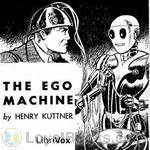 The Ego Machine
The Ego Machine
Celebrated playwright Nicholas Martin didn’t read the small print in his Hollywood options contract. Now he’s facing five years of servitude to a conceited director named Raoul St. Cyr, who’s taken a thoughtful play about Portuguese fishermen and added dancing mermaids. When it seems the plot has changed to include a robot from the future Nicholas looses all hope, but this robot may be just what he needs to win his freedom. – The Ego Machine was first published in the May, 1952 issue of Space Science Fiction magazine. | |
By: United States Supreme Court | |
|---|---|
 Civil Rights and Equal Protection Cases 1856-1948
Civil Rights and Equal Protection Cases 1856-1948
Landmark United States Supreme Court decisions focusing on civil rights and equal protection between 1856 and 1948. | |
 Civil Rights and Equal Protection Cases 1950-1960
Civil Rights and Equal Protection Cases 1950-1960
Landmark United States Supreme Court decisions focusing on civil rights and equal protection between 1950 and 1960. | |
By: Samuel B. Allison | |
|---|---|
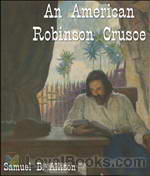 An American Robinson Crusoe
An American Robinson Crusoe
An American Robinson Crusoe is a short version of the original story. An indolent, rebellious teen goes on a marine voyage against his parents’ wishes. The ship (and all of its crew) is lost in a storm, but Robinson makes it to a deserted island. He has no tools, no weapons, but he lives for over 28 years on the island. He befriends many animals on the island and after over 20 years living solo, he is joined by a young “savage” who becomes his constant companion. The transformation from the young, lazy teen to a self-sustaining, incredibly knowledgeable adult is one of the major themes in the story. | |
By: Lucy Clifford (1846-1929) | |
|---|---|
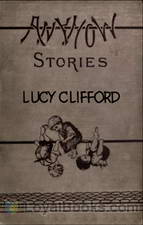 Anyhow Stories: Moral and Otherwise
Anyhow Stories: Moral and Otherwise
A collection of stories and poems for children by British novelist, journalist, and playwright Lucy Lane Clifford, better known during her lifetime as Mrs W.K. Clifford. She was famous with her mathematician husband for Sunday salons which attracted both scientists and literati. She was born in 1846 and died in 1929. Summary by Val Grimm | |
By: Elizabeth Davis Bancroft (1803-1886) | |
|---|---|
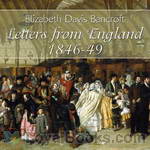 Letters from England, 1846-1849
Letters from England, 1846-1849
Elizabeth Bancroft went to England with her husband, historian George Bancroft, for three of the most dynamicy years in European hstory. As Ambassador to England from the United States, George moved in the highest circles. In his wife’s letters to their sons, her uncle, her brother, and Mrs. Polk (the President’s wife), we see glimpses not only of early Victorian English life, but also of Queen Victoria herself! Mrs. Bancroft speaks of dinners with Benjamin Disraeli, visits to Wordsworth, weekends in the country with Louis Napolean and Sir Robert Peel with such matter of fact aplomb that one cannot help being impressed. | |
By: Emily Neville (1919-1997) | |
|---|---|
 It's Like This, Cat
It's Like This, Cat
This novel won the Newbery Medal for excellence in American children's literature in 1964. This delightful story revolves around a 14 year old boy, Dave and his adopted cat, called just "Cat", who turns his ordinary everyday life into an exciting roller-coaster ride. | |
By: Charles Hoy Fort | |
|---|---|
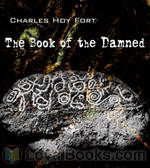 The Book of the Damned
The Book of the Damned
The Book of the Damned was the first published nonfiction work of the author Charles Fort (first edition 1919). Dealing with various types of anomalous phenomena including UFOs, strange falls of both organic and inorganic materials from the sky, odd weather patterns, the possible existence of creatures generally held to be mythological, disappearances of people under strange circumstances, and many other phenomena, the book is historically considered to be the first written in the specific field of anomalistics. – | |